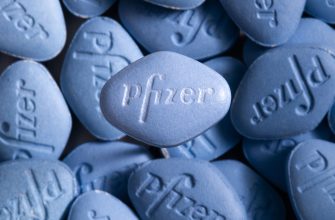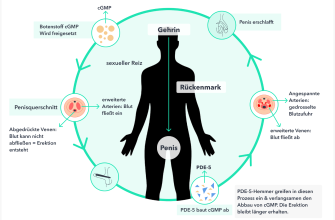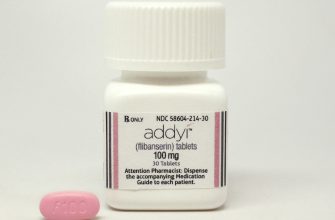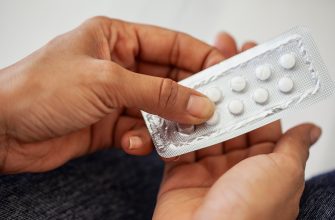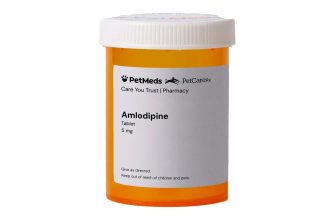Concerned about a potential link between finasteride and erectile dysfunction (ED)? You’re not alone. Many men using finasteride, a common medication for hair loss and benign prostatic hyperplasia (BPH), report experiencing ED as a side effect. This article directly addresses this concern, providing clarity and practical information.
Studies show a correlation between finasteride use and ED, although the exact mechanism isn’t fully understood. Some research suggests it may affect androgen receptor activity, influencing sexual function. The incidence varies, with some studies reporting rates as high as 2% among users. However, it’s crucial to remember that many men using finasteride experience no sexual side effects. The risk is real, but not inevitable.
Managing the Risk: Open communication with your doctor is key. Discuss your concerns honestly. They can assess your individual risk factors and help you weigh the benefits of finasteride against the potential side effects. Lifestyle modifications, including diet, exercise, and stress management, may also help mitigate potential ED issues. If ED develops, your doctor can discuss various treatment options.
Remember: This information is for educational purposes and doesn’t replace professional medical advice. Always consult your physician before making decisions about your medication.
- Finasteride and ED: Understanding the Link
- Prevalence and Severity
- Risk Factors and Management
- Finasteride’s Mechanism of Action and Potential Impact on Erectile Function
- Prevalence of Erectile Dysfunction as a Side Effect of Finasteride
- Risk Factors Increasing the Likelihood of Finasteride-Induced ED
- Pre-existing Conditions
- Dosage and Duration
- Age and Individual Sensitivity
- Concurrent Medications
- Differentiating Finasteride-Related ED from Other Causes of Erectile Dysfunction
- Identifying Finasteride’s Role
- Distinguishing from Other ED Causes
- Next Steps
- Considering Alternative Treatments
- Managing and Treating Finasteride-Induced Erectile Dysfunction
- When to Consult a Doctor Regarding Finasteride and Erectile Problems
- Long-Term Effects of Finasteride on Sexual Health and Erectile Function
- Persistent Sexual Side Effects: A Closer Look
- Understanding the Variability
Finasteride and ED: Understanding the Link
Finasteride, while effective for hair loss and BPH, can cause erectile dysfunction (ED) in some men. This side effect is more likely to occur with higher doses and prolonged use. The exact mechanism isn’t fully understood, but it’s believed to involve the drug’s interaction with hormones, specifically affecting sex hormone-binding globulin (SHBG) levels and testosterone metabolism.
Prevalence and Severity
Studies show that ED occurs in a small percentage of users, ranging from 1% to 15% depending on the study and dosage. The severity varies; some men experience mild difficulties, while others have significant problems. Importantly, ED often resolves after stopping finasteride, though the timeframe can differ. Some men experience lingering symptoms, even after discontinuation. Consult your doctor if you experience ED while taking finasteride; they can assess your individual situation.
Risk Factors and Management
Age, pre-existing health conditions, and other medications can influence the likelihood of experiencing finasteride-induced ED. Open communication with your doctor is key. They can discuss alternative treatments for hair loss or BPH if ED becomes problematic. Lifestyle changes, such as regular exercise and a healthy diet, might help mitigate the risk or improve symptoms. Furthermore, exploring other ED treatments in conjunction with or after stopping finasteride may be an option. Remember, open communication with your doctor is paramount for proper management.
Finasteride’s Mechanism of Action and Potential Impact on Erectile Function
Finasteride primarily inhibits the enzyme 5α-reductase, which converts testosterone into dihydrotestosterone (DHT). Reduced DHT levels are the core mechanism behind finasteride’s efficacy in treating benign prostatic hyperplasia (BPH) and male pattern baldness. However, this reduction in DHT can also impact erectile function.
DHT plays a role in the development and maintenance of erectile tissue. While testosterone is primarily responsible for libido, DHT contributes to the structural integrity and responsiveness of erectile tissue. Therefore, finasteride’s DHT-lowering effect might contribute to erectile dysfunction (ED) in some men, although this is not universally experienced.
Studies show a correlation between finasteride use and a small increase in the risk of ED. However, this risk is generally considered low and often temporary, resolving after cessation of the medication. The severity of ED varies, with some men reporting minimal impact while others experience more significant difficulties.
Factors influencing the likelihood of experiencing ED include the individual’s baseline erectile health, dosage, duration of finasteride use, and other underlying health conditions. Open communication with your doctor is critical. Discuss any concerns about potential side effects, including erectile dysfunction, before starting or continuing finasteride treatment.
If you experience erectile dysfunction while taking finasteride, discuss alternative treatment options with your physician. They may adjust your dosage, suggest a different medication, or recommend lifestyle changes to improve erectile function. Remember, prompt medical attention can lead to better management of potential side effects.
Prevalence of Erectile Dysfunction as a Side Effect of Finasteride
Studies show erectile dysfunction (ED) affects a significant portion of men using finasteride. Reported rates vary considerably depending on the study design and population sampled. Some studies report rates as low as 1%, while others report figures exceeding 10%. This discrepancy highlights the challenge in accurately determining prevalence due to factors like underreporting and varying methodologies.
A meta-analysis of multiple studies published in the Journal of Sexual Medicine found an overall pooled prevalence of ED among finasteride users to be approximately 2-5%. However, this is just an average, and individual experience can differ significantly.
Several factors likely contribute to this variability. These include age, duration of finasteride use, baseline erectile function, and the presence of other underlying health conditions. Men with pre-existing vascular or neurological issues might experience a higher risk of finasteride-induced ED.
If you experience ED while using finasteride, consult your doctor. Discontinuing finasteride may alleviate symptoms for some men, but recovery timelines vary. Your doctor can assess your individual situation and discuss alternative treatment options if needed. Open communication with your healthcare provider is crucial.
Remember, this information is for educational purposes only and does not constitute medical advice. Always consult your doctor before making any decisions about your medication.
Risk Factors Increasing the Likelihood of Finasteride-Induced ED
Genetic predisposition significantly impacts your risk. Studies suggest certain genetic variations increase the chance of experiencing Finasteride-induced sexual side effects. Consult your doctor about genetic testing if you have a family history of these issues.
Pre-existing Conditions
Men with pre-existing erectile dysfunction or low libido face a higher probability of experiencing worsening symptoms with Finasteride. Similarly, individuals with hormonal imbalances or underlying health conditions affecting sexual function should carefully consider the risks. Open communication with your physician is key before starting Finasteride.
Dosage and Duration
Higher doses of Finasteride and prolonged use correlate with a greater likelihood of experiencing sexual side effects, including ED. Discuss the lowest effective dose and shortest treatment duration with your doctor. Regular monitoring is advisable.
Age and Individual Sensitivity
Age plays a role; older men might be more susceptible to Finasteride’s impact on sexual function. Individual sensitivity varies considerably; some men experience side effects, others don’t. This highlights the need for personalized medical advice. Always inform your doctor of any side effects.
Concurrent Medications
Interaction with other medications can influence the risk. Some drugs can exacerbate Finasteride’s side effects. Provide your doctor with a complete list of all medications you’re currently taking, including over-the-counter drugs and supplements.
Differentiating Finasteride-Related ED from Other Causes of Erectile Dysfunction
Consult your doctor. They can perform a thorough examination and consider your medical history to determine the cause of your erectile dysfunction (ED).
Identifying Finasteride’s Role
Finasteride-induced ED typically manifests as decreased libido and difficulty achieving or maintaining an erection. The onset usually occurs within weeks to months of starting the medication. Importantly, unlike other ED causes, it often improves upon discontinuation. Your doctor will assess the timeline of your ED symptoms in relation to your Finasteride use. They may also ask about other symptoms, such as gynecomastia (breast enlargement) or reduced ejaculate volume, which can also be associated with Finasteride.
Distinguishing from Other ED Causes
Many factors contribute to ED, including underlying health conditions like diabetes, heart disease, and high blood pressure; lifestyle factors such as smoking, obesity, and lack of exercise; psychological issues like stress, anxiety, and depression; and the side effects of other medications. Your doctor will assess these factors carefully. Blood tests and potentially other investigations may be needed to identify specific contributing factors.
Next Steps
Open Communication is Key: Be transparent with your doctor about all medications you’re taking and any symptoms you’re experiencing. This enables them to make an accurate diagnosis and develop a personalized treatment plan. This plan might include discontinuing Finasteride (if appropriate), managing underlying health conditions, lifestyle changes, or exploring other ED treatments. Remember, accurate diagnosis is crucial for effective management.
Considering Alternative Treatments
If Finasteride is implicated and needs to be discontinued, your doctor can discuss alternative treatments for your initial condition. If Finasteride is not the cause, other options for managing your ED will be explored, possibly including medication, lifestyle adjustments or counseling.
Managing and Treating Finasteride-Induced Erectile Dysfunction
If you’re experiencing erectile dysfunction (ED) linked to finasteride, seek medical advice immediately. Don’t self-treat.
Your doctor will likely explore several avenues:
- Medication adjustment: They might reduce your finasteride dosage or switch you to a different medication if possible, depending on your condition.
- Phosphodiesterase-5 (PDE5) inhibitors: Drugs like sildenafil (Viagra), tadalafil (Cialis), vardenafil (Levitra), and avanafil (Stendra) can improve erectile function. Your doctor will assess your suitability for these.
- Alternative treatments: Other options include alprostadil (intracavernosal injection or urethral suppository), vacuum erection devices, or penile implants. These are generally considered if other treatments fail.
- Lifestyle changes: Maintaining a healthy weight, regular exercise, managing stress, and avoiding smoking and excessive alcohol consumption are crucial for overall health and can positively impact sexual function.
- Hormone testing: In some cases, testing testosterone levels is warranted to rule out hormone-related issues contributing to ED.
Your doctor will develop a personalized treatment plan based on your specific situation, medical history, and response to treatment. Regular follow-up appointments are necessary to monitor your progress and adjust the treatment plan as needed.
Remember, post-finasteride syndrome (PFS) is a controversial topic. While some men report persistent sexual side effects after discontinuing finasteride, the scientific community doesn’t have a complete understanding of this condition. Open communication with your doctor is key to finding the best path forward.
- Be honest: Fully disclose all symptoms and medications to your doctor.
- Be patient: Finding the right treatment can take time.
- Be proactive: Actively participate in your care and ask questions.
When to Consult a Doctor Regarding Finasteride and Erectile Problems
Schedule an appointment immediately if you experience sudden or significant erectile dysfunction while taking finasteride. Don’t delay; prompt medical attention is key.
Seek medical advice if erectile difficulties persist for more than a few weeks, even if they’re mild. Your doctor can assess the situation and determine the best course of action.
Contact your physician if you experience any other concerning sexual side effects alongside erectile problems, such as decreased libido or difficulty achieving orgasm. This helps establish a complete picture of your health.
Consult your doctor if you’re considering stopping finasteride due to erectile dysfunction. They can help you weigh the risks and benefits and explore alternative treatment options, if necessary.
Consider a doctor’s visit if you’re unsure whether your erectile problems are related to finasteride. A thorough evaluation can help rule out other potential causes.
| Symptom | Action |
|---|---|
| Sudden, severe erectile dysfunction | Immediate doctor’s appointment |
| Persistent erectile dysfunction (several weeks) | Consult your physician |
| Erectile dysfunction with other sexual side effects | Seek medical advice |
| Considering stopping finasteride due to ED | Discuss with your doctor |
| Uncertainty about the cause of ED | Schedule a doctor’s visit |
Long-Term Effects of Finasteride on Sexual Health and Erectile Function
Consult your doctor for personalized advice, as individual responses to Finasteride vary significantly.
Persistent Sexual Side Effects: A Closer Look
While many men experience temporary sexual side effects, a subset report persistent issues even after discontinuing Finasteride. These can include reduced libido, erectile dysfunction, and ejaculation disorders. Studies show the persistence rate of these symptoms varies, with some studies showing a higher percentage than others. This variability likely stems from differences in study design and participant populations.
- Reduced Libido: Lowered sex drive is a commonly reported long-term side effect. The severity varies, and some men find their libido returns to normal after stopping treatment, while others experience prolonged or permanent changes.
- Erectile Dysfunction: Difficulty achieving or maintaining an erection is another potential long-term consequence. The exact mechanism isn’t fully understood, but it’s thought to be linked to hormonal changes and possibly nerve damage.
- Ejaculation Disorders: This may manifest as reduced ejaculate volume, changes in ejaculatory sensation, or difficulty ejaculating altogether. Again, these effects may persist even after stopping Finasteride.
Understanding the Variability
The likelihood of experiencing long-term sexual side effects from Finasteride isn’t fully predictable. Several factors may influence this, including dosage, duration of use, individual sensitivity, age, and overall health.
- Dosage and Duration: Higher doses and longer treatment periods seem to increase the risk of persistent side effects.
- Individual Sensitivity: Genetic predisposition and other individual factors influence how one responds to Finasteride.
- Age and Health: Older men or those with pre-existing health conditions may be more susceptible to long-term side effects.
Open communication with your doctor is critical. Discuss your concerns, medical history, and any side effects you’re experiencing. They can provide accurate information specific to your situation and guide you on appropriate management strategies. Regular check-ups can help monitor your progress and detect potential problems early.



